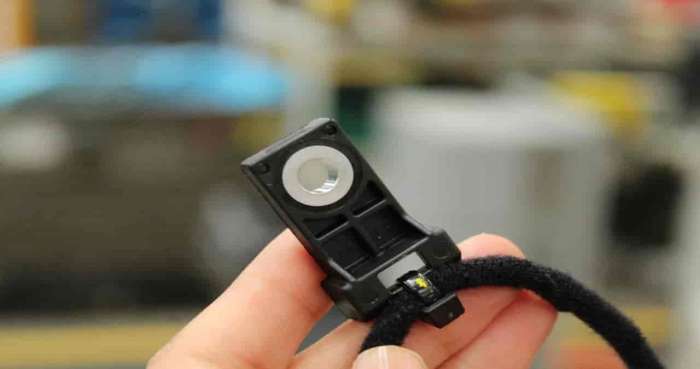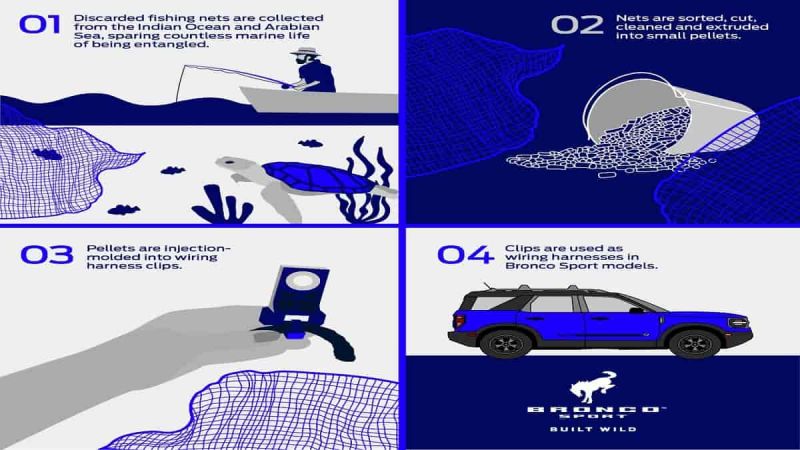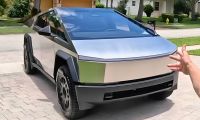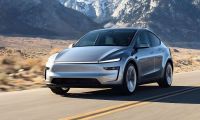How many times in the last year have you heard about the vast pile of plastic and other detritus that has piled up in the Pacific? According to a story published in Scientific Reports, the "Great Pacific Garbage Patch" contains at least 79,0000 tons of discarded plastic. The colossal garbage patch covers an area of about 617,800 square miles.
However You Measure It, The Patch Is Big
For those who measure things in kilometers, it is 1.6 million square kilometers. So, however you measure it, it is one massive pile of floating plastic, made up of things like the plastic bottles civilization continues to use and discard, as well as other lighter-than-water items.
Imagine what an automaker could do with this resource – what this mess is when you think about it – if parts for cars, trucks could be made out of the mess. Indeed, using this resource to help our needs would cut down on the size and eliminate one colossal pile of ocean-going trash pollution, and it would certainly help cut down on the problem that the pile of trash represents.
In its effort to be a sustainability leader, Ford has become the first automaker to use 100 percent recycled ocean plastics to produce automotive parts. Indeed, consumer products made from recycled ocean plastics include everything from sunglasses and T-shirts to running shoes and yarn.
Ford has invested in turning at least a piece of the seagoing plastic pile into wiring harness clips for the Ford Bronco Sport models. Some refer to the ocean-harvested plastic "ghost gear."
Parts Are The Equal Of Any Others
The strength and durability of the nylon materials that make up part of the ocean-going plastic trash heap equal that of previously used petroleum-based parts but with a 10 percent cost savings, and they require less energy to produce. The clips represent a significant first step in the company's plans to produce other parts of recycled ocean plastics on other models.
"This is another example of Ford leading the charge on sustainability," said Jim Buczkowski, vice president of research and Henry Ford technical fellow. "It is a strong example of circular economy, and while these clips are small, they are an important first step in our explorations to use recycled ocean plastics for additional parts in the future."
According to the Pew Charitable Trusts, suppose you look closely at some of the 13 million metric tons of plastic that enter the ocean each year. The fishing industry, which bears responsibility for much of the plastic that enters the ocean, relies on plastic fishing nets and other equipment because of its durability, lightweight, buoyancy, and low material cost. Those qualities contribute to creating ghost nets that are a growing threat to marine life. Ghost gear comprises nearly 10 percent of all sea-based plastic waste, entangling fish, sharks, dolphins, seals, sea turtles, and birds. Ford's effort helps to use this plastic and protects marine life. The automaker has particular use for this material, wire clips.
Parts Are Invisible But Perform Key Role
A small item, wiring clips, are invisible to vehicle occupants. The Bronco Sport's wiring harness clips, which weigh about five grams, fasten to the sides of the Sport's second-row seats and guide the wires that power side-curtain airbags. Despite spending time in saltwater and sunlight, Ford's testing has shown that the material is as strong and durable as petroleum-based clips made from new sources.
The material is helping to build an industry as it spurs job creation throughout the development process as the collection companies pick up the plastic material from the Indian Ocean and the Arabian Sea. The company heading this up is DSM Engineering Materials. Items produced using plastics collected from the oceans include many consumer goods, but automotive parts have not been on their list until now.
DSM's processing begins with harvesting discarded nylon fishing nets. The material is washed of saltwater, dried, and extruded to form small pellets, then injection-molded by supplier HellermannTylon into the desired clip shape. Ford is already planning to use additional parts made of recycled ocean plastics. The parts include transmission brackets, wire shields, and floor side rails – all stationary parts with strength and durability the material can meet or exceed.
"As a global leader in cable management innovation, HellermannTyton strives for eco-friendly ways to pave the path to a more sustainable future," said Anisia Peterman, HellermannTyton's automotive product manager. "Developments like this do not come easy, so we are proud to collaborate with Ford in support of a unique product solution that contributes to healthier oceans."
Ford Has Recently Used Recycled Plastics On Escape
The new effort is not Ford's first at using recycled plastics. The automaker most recently used recycled water bottles to produce lightweight, aerodynamic-enhancing, noise-reducing underbody shields for the 2020 Escape.
With the introduction of parts made from recycled ocean plastic, the automaker is finding new opportunities to help with the global effort to reduce ocean debris that hampers sea life or, when harvested, further clutters landfills.

Images Courtesy The Ford Motor Co.
Marc Stern has been an automotive writer since 1971 when an otherwise normal news editor said, "You're our new car editor," and dumped about 27 pounds of auto stuff on my desk. I was in heaven as I have been a gearhead from my early days. As a teen, I spent the usual number of misspent hours hanging out at gas stations Shell and Texaco (a big thing in my youth) and working on cars. From there on, it was a straight line to my first column for the paper, "You Auto Know," an enterprise that I handled faithfully for 32 years. Not many people know that I also handled computer documentation for a good part of my living while writing YAN. My best writing, though, was always in cars. My work has appeared in Popular Mechanics, Mechanix Illustrated, AutoWeek, SuperStock, Trailer Life, Old Cars Weekly, Special Interest Autos, and others. You can follow me on: Twitter or Facebook.












